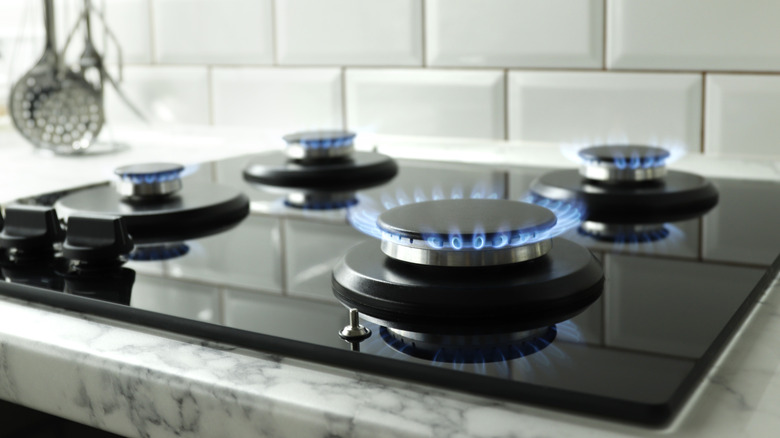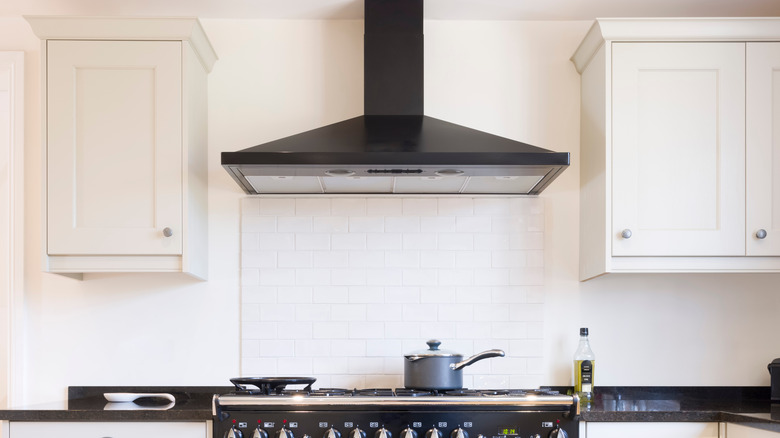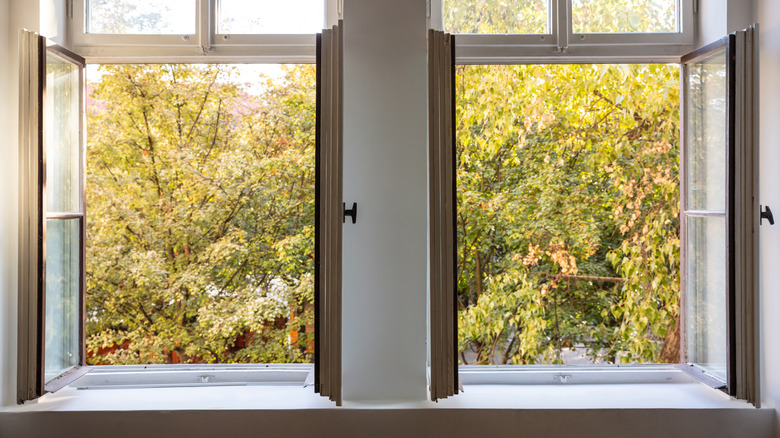Why You Should Be Using Your Stove's Back Burners More Often
If you use a gas stove, you probably love how quickly it heats up and how evenly it cooks. Unfortunately, it also releases pollutants into the air, including carbon monoxide, nitrogen dioxide, and formaldehyde into your home, according to the California Air Resources Board. Exposure to these pollutants can contribute to headaches, and fatigue, and be a trigger for people with asthma or lung conditions. Fortunately, experts who study indoor pollution offer science-backed advice on how to reduce exposure for you and your family.
Brett Singer, the lead scientist at the Indoor Environment Group at Berkeley Lab, has spent years researching indoor air pollution as part of his lab's focus is improving the quality of energy-efficient homes to hasten their adoption. As part of his research, Singer has completed numerous studies on gas stoves and their effect on home air quality. In a video by Berkeley Lab, he says, "When you cook, you can actually release pollutants in your home that can reach levels that the EPA says are not safe outdoors."
If you are planning to upgrade your stove, Singer told Stanford Medicine's Scope blog that electric stovetops produce far fewer pollutants and newer models of gas stoves produce less than older models because of design improvements, but, a quick kitchen renovation isn't in the works for many folks. Thankfully, there are still ways to reduce your risk even if you live in an apartment or can't afford to upgrade. The easiest, Singer says, is to consistently use your range fan and cook on the back burner (whether you're using a gas or electric stove) whenever possible, according to Singer, who has published multiple peer-reviewed studies on the subject.
Why researchers suggest cooking on the back burner
You may wonder why burner choice is so important, especially when we use the term "on the back burner" to imply something isn't of immediate importance. Singer told the Dayton Daily News your ventilation fan can remove twice as many pollutants and chemicals from the air as it does when you cook on the front burner.
This is because range fans do a better job of capturing the exhaust from back burners since hot air rises in a column over each burner (bringing with it the chemicals from cooking and the gas) and the front burners are usually only partially covered by ventilation fans, according to research by Singer's lab published in the American Chemical Society. Properly ventilating cooking and gas fumes and releasing them outdoors is the key to keeping these chemicals from circulating in your home, but this process works better when you cook using the back burners at as low of heat as possible and run your exhaust fan constantly while cooking and for a few minutes after. Even then, Singer told Scope that at least 30% of the pollutants remain in your home.
For those who have an exhaust fan that doesn't vent outside (or maybe you don't have one at all), singer and public health agencies have other recommendations to help you cook safely.
Strategies to further reduce your risk even if you don't have a range fan
If you don't have a range hood that vents outside, don't forget the power of good old fresh air. Since the goal is to get air moving around your space, pushing the pollutants out of your home and drawing clean air in, the California Air Resources Board suggests using a wall or ceiling exhaust fan and opening windows or external doors while cooking. Singer agrees and suggests running other exhaust fans like the one in your bathroom if you don't have a good range hood.
If changing your physical space doesn't do enough for you, another strategy is to opt for cooking techniques that produce fewer gasses. High-temperature cooking, like frying and broiling, releases the most pollutants. Try using lower temperature methods like sauteeing or boiling or consider using electric appliances like a microwave oven to reduce your exposure when possible. The self-cleaning cycle of both gas and electric ovens releases especially high amounts of chemicals into the air, according to the California Environmental Protection Agency, so the agency recommends running it when you are outside with the windows open.
It's unlikely you'll completely eliminate all of the air pollutants that result from cooking — even folks with electric ranges are exposed to some — but by making a little extra effort to reduce these risks, we can enjoy using our stoves to cook nourishing meals.


